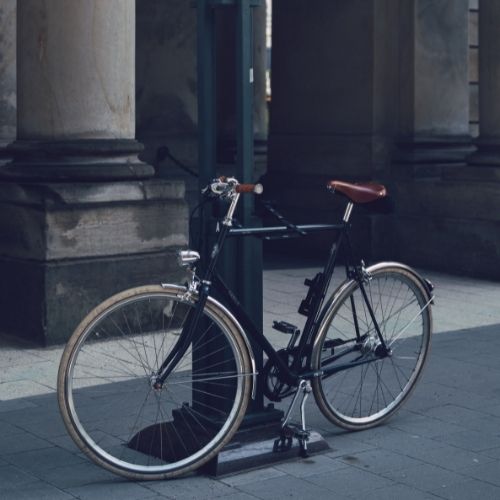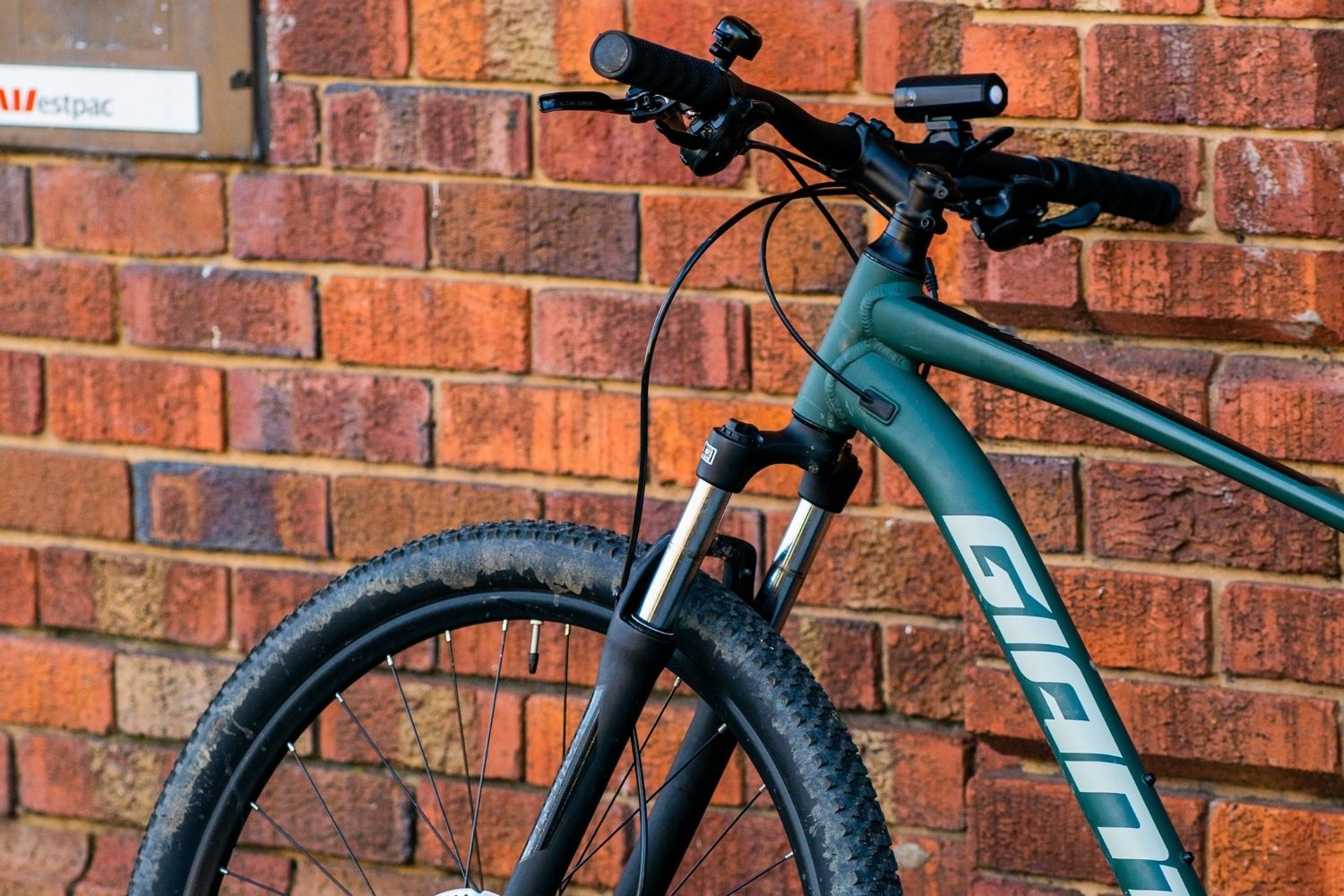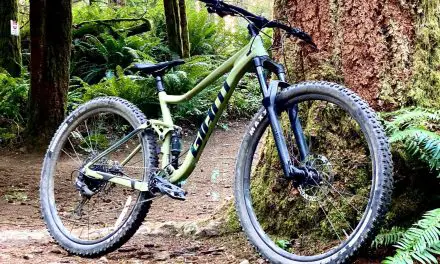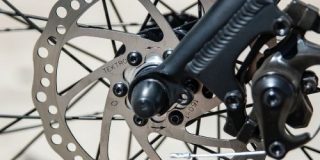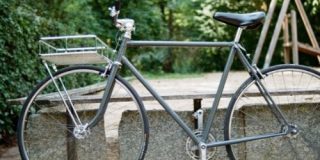Everyone deals with it, no matter if you are an expert rider or someone just learning, everyone has to pump up bicycle tires at some point in their bicycling experience. However one of the biggest issues with this, is when you are pumping up your tire and it either doesn’t want to pump up at all, or doesn’t hold air!
So why won’t your bicycle tire inflate? There are six reasons why your bicycle tire may not inflate partially, or all the way. You may be using the wrong head on your pump for your valve stem style, you may have the pump fitted incorrectly, you valve stem may be damaged, there could be a puncture in your tire, your pump may be damaged, or if you are going tubeless it is possible your bead may not be set correctly.
In this article, we are going to go more in depth on these, starting from the easiest to diagnose and fix to the more difficult ones! Remember, its best to start with the cheapest and easiest fixes first.
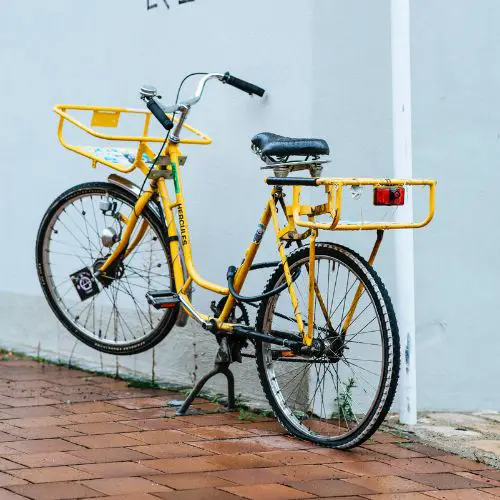
1. Utilizing the wrong valve stem on pump
There are two different types of valve stems that bicycles normally will use! First there is the standard Schrader valve, which most people are familiar with, and then there is the Presta valve of which is less common, but sometimes a superior version.
I’m not going to get too far into the difference between the two (I have this article discussing it here). However for the sake of time, just know that they are different.
This difference means that most bicycle tire pumps actually have two different ports for valve stems on them! If your tire is not accepting air, or something seems off, it is very possible you are using the incorrect port and you just need to adjust it.
If this is something you are running into, it is the easiest to diagnose, and most definitely the easiest to resolve!
2. Pump fitted incorrectly
Alright, so you have verified that you are using the right port on your pump! If you find that you are getting a hissing sound from that port when it is being used, it is very possible the pump or compressor might just be fitted on the valve stem incorrectly, and instead of air going into the tire, the air is escaping before is gets there.
If you hear that hissing from that area, take a quick moment to remove the pump from the valve stem, and then place it back on. You will want to make sure that it seats level, and far enough down, otherwise air will continue to escape.
One common issue people run into here, is the issue that is caused when your tire is completely flat. When this happens, the valve likes to not stay, and instead pushes itself down into the tire, so you are unable to seat the pump on the stem correctly. In this case, place your hand on the opposite side of the tire to keep the valve stem in its place while you push down with the pump.
3. Valve stem is damaged
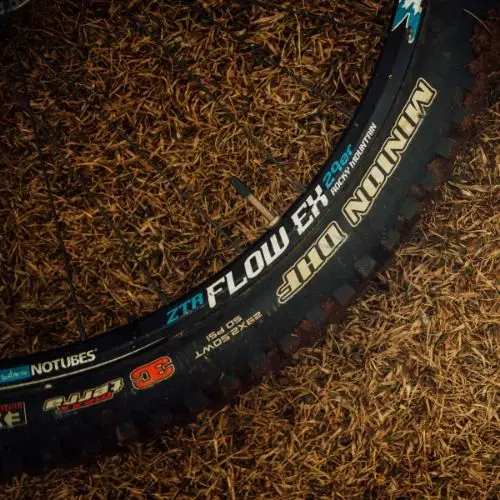
Now, if you are completely certain that you have seated the pump correctly, and you are still getting a hissing sound from the valve stem area, you might just have a damaged valve stem. This unfortunately is the beginning of where some money will need to be spent to resolve the issue.
Over time, if you have an older tire, the rubber at the bottom of the valve stem will have dried out from time and usage, and it is just a matter of time as to when it will fail. This is a normal part of bicycle maintenance!
So how do you resolve valve stem damage? If you utilize a tube in your tire, the best bet would be to completely replace the tube, as new ones will also come equipped with a new valve stem to replace the damaged one. Just make sure to get the same valve stem style, and sizing of tire as you had before to make for a correct fit.
If this sounds like something you need to do! Make a quick visit here to find the right one for you.
4. Puncture in the tire
This is probably the one that most people are familiar with! You ran over something sharp, or you pinched the tire between the ground and your wheel, causing a slit or puncture in the tube or tire. This is an unfortunate part of bicycling, especially in the mountain biking world.
The easiest way to tell if you have damage to your tire or tube is to take a spray bottle with a soapy water mixture and spray it along the tire. Pump it up, and if you see bubbles coming from anywhere, that is where the damage is.
Some great ways to resolve this issue is by utilizing a tire sealant like my favorite one right here to fill any small holes in the tire. These sealants will move around inside the tire or tube while you are riding, find their way into the damage and seal it up.
Now if the damage is considerable enough, you will likely have to replace the tire or tube completely. In this case you will find new tubes here and if you are going tubeless, you will need to find a new tire, which is right here!
5. Compressor or pump is damaged
Another common issue actually has nothing to do with the bike itself, and instead has to do with your pump or compressor. It is very possible this has gone bad, and is actually not pushing air into the tire, even if you have done everything right.
The easiest way to tell if this is your issue is to keep the pump tube off of the valve stem, turn on the compressor or push down on the pump and see if you feel or hear any air coming out of it.
Another easy way to tell, is if your electric compressor sounds much louder than normal, as this is a common tale-tell sign that a compressor has failed.
If this is your case, and it’s time to get a new one, I really like this portable air compressor that is a great price, or if you like to go the more manual route, this pump is also an awesome option.
6. Tubeless bead on tire is not seated correctly
This is actually a very common issue, however it is also for a smaller niche of riders, making it less of an overall common issue (which is why it is last on this list). Mountain bikers sometimes like to ride their bikes tubeless, which means that air fills the tires themselves, rather than the air filling a tube that fills the tire.
In this case, the tires themselves form a bead (with the help of some tape) along the wheel. However if this bead fails, or there isn’t enough air to push the tire against the walls of the wheel, air will escape.
If this sounds like something that is happening to you, you will basically want to completely re-install your tire to get the correct fitment.
Frequently Asked Questions
Sometimes tires just go flat, even if there is no issue with the tire or tube at all. This generally happens when a bicycle has sat for long periods of time! Air will escape over time, resulting in a flat. As long as it hasn’t been too long, and the tube has been pinched by the wheel, you should be able to pump it up and be on your way with no worry.
Pinch flats happen a lot to cyclists that lower the PSI in their tires to get more surface area for the tires on the ground. The downside to this, is that it can result in pinch flats if you hit a root or a jump to hard.
Road bicycle tires require some of the highest PSI of any bicycle on the road! They require a minimum of 90 psi, but can also go all the way up to 120 psi to get the least amount of rolling resistance.
Conclusion
So there you have it! I think the one that most people will run into when their bicycle is not accepting air will be that the pump is just not fitting correctly for some reason or another. However other common ones are a punctured tire or valve stem damage.
Keeping up on your bicycle maintenance will help with many of these, and hopefully help you catch the issues before you run into them when you need the bike the most.

